Introduction to Honey Locust Bonsai
The Honey Locust Bonsai (Gleditsia triacanthos) is a stunning miniature version of the North American tree. It is adaptable and can grow up to 30 meters in the wild, but as a bonsai, it is pruned and shaped to remain small and easy to manage while still retaining its mature tree-like appearance.
The Honey Locust Bonsai has a distinct spiny trunk and shoots, which gives it a rugged look that makes it appealing as a bonsai. Unlike other bonsai trees grown from seeds, Honey Locust Bonsais are often developed to be thornless.
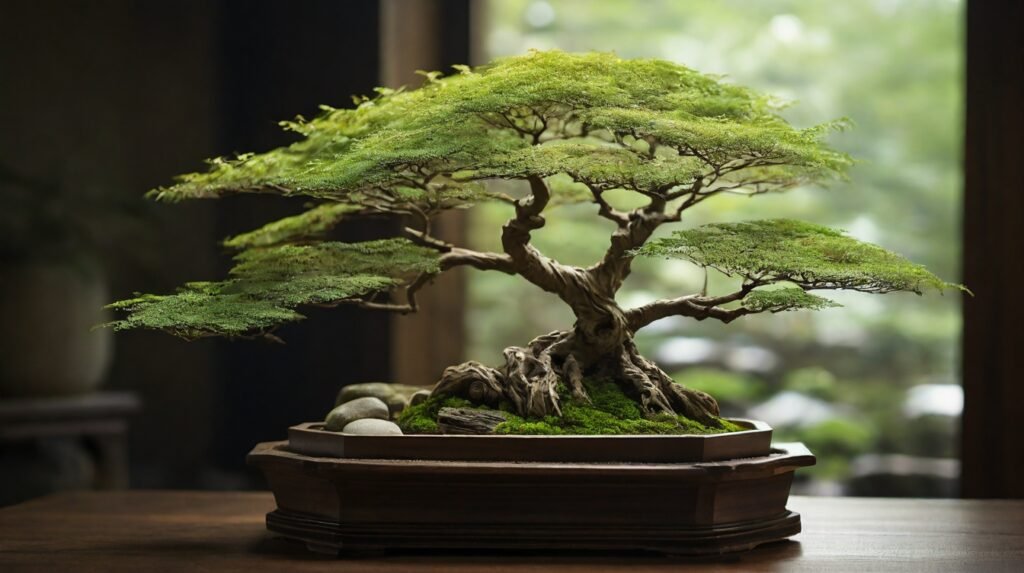
For the Honey Locust Bonsai, good soil quality is essential. Bad soil could cause problems with the tree’s health and growth. This species is highly adaptable and great for beginners. Please keep it in a handmade ceramic pot with drainage holes for style and function.
Are you interested in starting a Honey Locust Bonsai hobby? Get a growing kit containing seeds and all the necessary equipment.
Getting Started with Your Honey Locust Bonsai
Learn how to start a Honey Locust Bonsai with this step-by-step guide.:
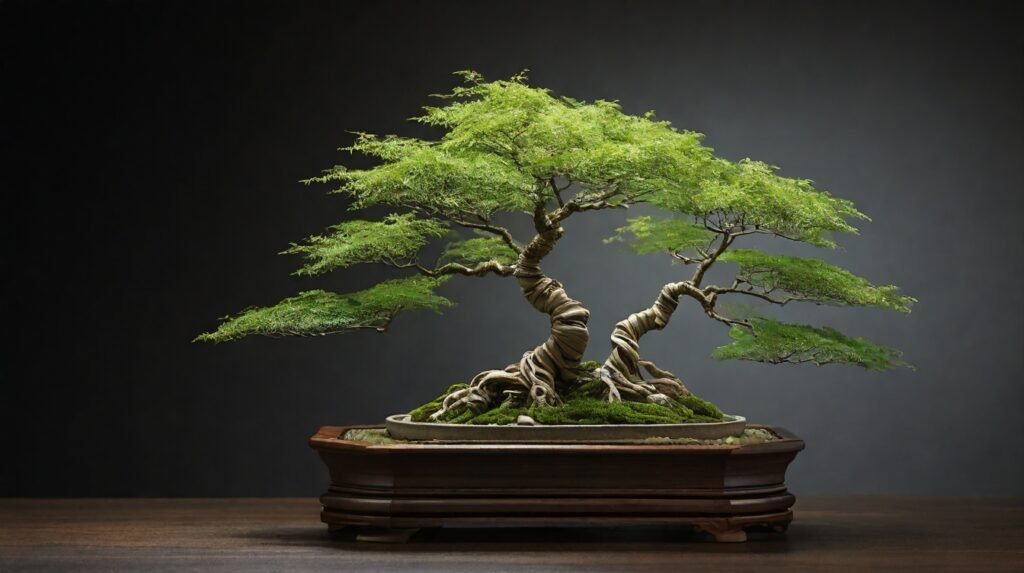
Obtain a Honey Locust Sapling or Seed: To grow a Honey Locust bonsai; you can buy a sapling or plant a seed. Growing from a seed takes longer but gives you the satisfaction of starting from scratch.
Choose the Right Pot: Use a shallow and wide pot proportionate to your tree’s size. Ensure the pot has sufficient drainage holes to avoid waterlogging, which may cause root rot.
Prepare the Soil: Honey Locusts thrive in well-draining soil that is a mix of organic and inorganic matter.
Plant the Tree: Add soil to the pot, place the tree inside, and cover the roots with more soil until the base of the trunk is at soil level. Firm the soil around the tree gently.
Watering and Fertilizing: To care for your bonsai, water it thoroughly after planting and again when the soil dries out. Avoid overwatering to prevent root rot. Apply a balanced bonsai fertilizer every two weeks during the growing season (spring and summer).
Pruning and Wiring: To maintain the shape of your Honey Locust Bonsai, prune it regularly. You can use wiring to guide the growth of branches and trunks into desired forms. Bonsai is an art form that involves shaping a tree.
Repotting: Repot your Honey Locust Bonsai every 2-3 years or when the roots fill the pot. Do this in early spring before new growth starts.
Location: Honey Locust Bonsai trees can grow in full sun or partial shade.
Caring for Your Honey Locust Bonsai
To care for a Honey Locust Bonsai, you need to know how much water, light, and temperature it requires and how to prune it. Here is a complete guide on caring for your Honey Locust Bonsai.
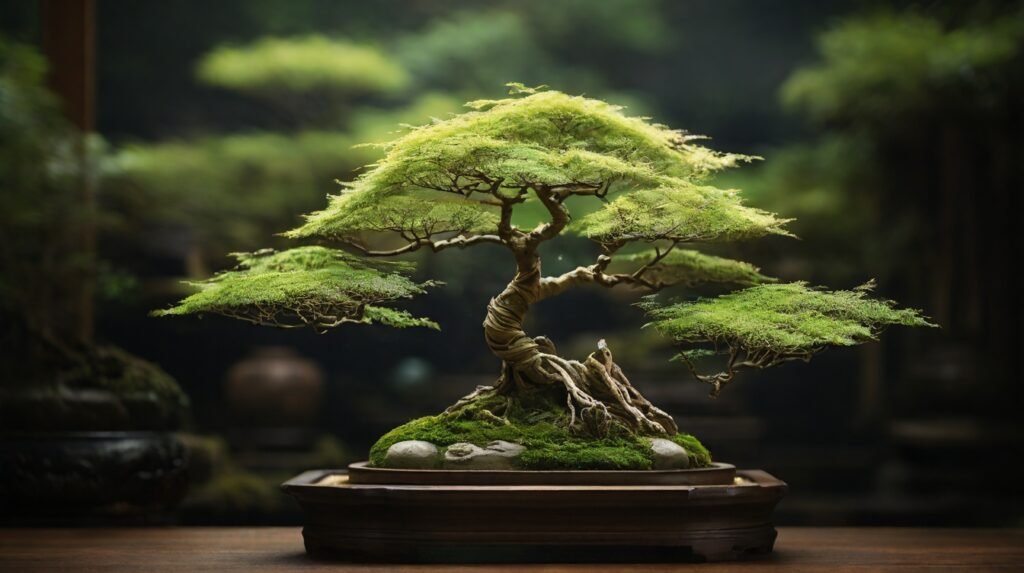
Watering
Water your Honey Locust Bonsai tree thoroughly until water runs out of the pot’s drainage holes. Then, let the soil dry slightly before watering again. Keep the soil moist, but avoid waterlogging it.
Light and Temperature
The Honey Locust Bonsai needs full sunlight and can handle partial shade. It is a thorny tree that can tolerate various temperatures but should be shielded from extreme cold.
Fertilizing
Fertilize your Honey Locust Bonsai every two weeks with a balanced bonsai fertilizer during spring and summer. In the fall, reduce feeding to once a month.
Pruning and Shaping
To maintain your bonsai’s shape:
- Prune it regularly.
- Trim new growth down to the first pair of leaves.
- Use the wire on the branches for significant shaping.
The best time to wire is during spring when the branches are flexible. Be mindful of wired branches, as the wire can cut into the bark if left on for too long.
Repotting
Report your Honey Locust Bonsai every 2-3 years or when the roots have filled the pot. The ideal time to repot is in early spring, right before the growing season begins.
Pests and Diseases
Check your Honey Locust Bonsai trees regularly for signs of aphids or scale insects, and apply insecticide as needed to keep them pest-free.
Pruning and Shaping Your Honey Locust Bonsai
Maintaining the aesthetic appeal of your Honey Locust Bonsai requires pruning and shaping. Follow this guide for instructions on how to do it.
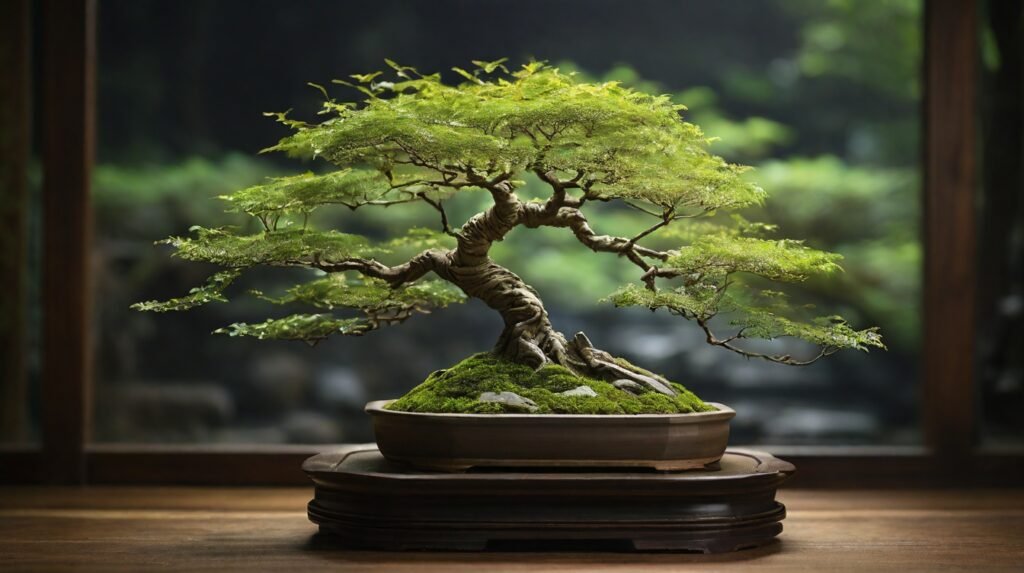
Pruning
Regular pruning is essential to maintain the shape of your bonsai and promote bushier growth. Here’s how to do it:
To prune your bonsai:
- Identify the unwanted branches.
- Use clean, sharp bonsai shears for clean cuts.
- Cut just above a leaf node for new growth.
- Trim back new growth regularly to maintain your desired shape.
Shaping
To train and shape the growth of the branches and trunk, gently bend and guide them using wire.
- Use wire that’s about one-third the thickness of the branch you’re shaping.
- Wrap the wire around the trunk or branch of your bonsai in a spiral pattern starting from the base.
- Bend the wired branches into your desired shape, but avoid snapping them.
- Keep the wire on the branch until it grows into the desired shape, which may take a few months.
- Remove the wire with caution to prevent bark damage. If the wire cuts into the bark, take it out immediately.
When pruning and shaping bonsai trees, being patient and careful is essential; these techniques require a slow and thoughtful approach to achieve the desired results.
Troubleshooting Common Issues
If you own a Honey Locust Bonsai, you might need some help with taking care of it. Here are some of the common issues and their solutions.
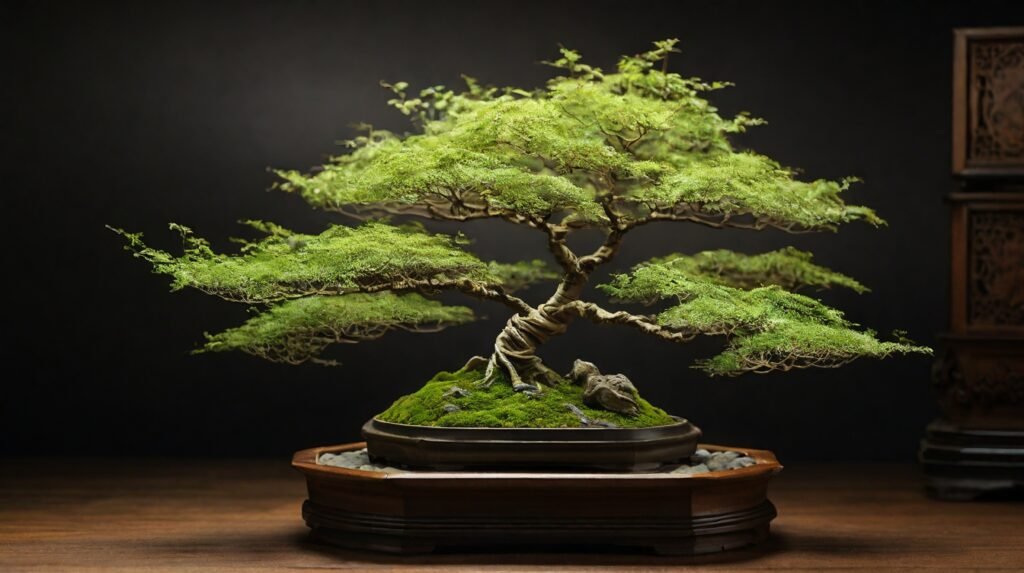
Yellowing Leaves
Yellow leaves on your bonsai may indicate overwatering, under-watering, or nutrient deficiency. Ensure proper watering and nutrient supply to maintain a healthy plant.
Leaf Drop
To prevent sudden leaf drop in your bonsai, ensure it is placed in a stable environment with consistent temperature and light conditions. Drastic changes in temperature or light can cause sudden leaf drop.
Pests
If you spot minor bugs or a sticky residue on the leaves of your bonsai, it might be infested with pests like aphids or scale insects. Use an appropriate insecticide to treat your tree to deal with this issue.
Slow Growth or No New Growth
Feed your bonsai with a balanced bonsai fertilizer during the growing season to ensure it gets the necessary nutrients for growth.
Branches or Trunk Turning Black
Overwatering can cause root rot. To fix this, reduce watering and try repotting your bonsai in well-draining soil.
Wire Cutting into Bark
Remove the wire from your bonsai immediately if it starts cutting into the bark to prevent damage.
Remember that tree care needs can vary depending on the species, and similar symptoms may indicate different problems in different scenarios. So, closely observe your tree’s condition and adapt your care routine accordingly.
Conclusion
Remember the key points for maintaining your Honey Locust Bonsai: Prune and shape it properly, troubleshoot issues early, and enjoy the journey of bonsai cultivation. Keep learning, experimenting, and nurturing your bonsai to appreciate the beauty of growth and change.
Frequently Asked Questions
What is the best way to water my bonsai?
Watering your bonsai is essential, but it requires care. It’s best to water your bonsai thoroughly until you see water running out of the drainage hole. However, avoid overwatering as it may cause root rot.
How often should I prune my bonsai tree?
Pruning frequency can vary depending on the type of tree, its growth rate, and the time of year. Generally, pruning is done during the growing season to shape the tree and maintain its miniaturization.
Can I keep my bonsai tree indoors?
While some bonsai trees can thrive indoors, most prefer outdoor conditions as they require ample sunlight and fluctuating temperatures. Research your specific tree species to ensure they’re given the optimal environment.
How do I report my bonsai tree?
Repotting a bonsai tree involves carefully removing it from its current pot, pruning its roots, and placing it in a new pot with fresh bonsai soil. This process is typically done every 2-3 years but can vary based on the tree’s age and species.
What if my bonsai tree gets a disease or pest infestation?
If your bonsai tree shows signs of disease or pests, it’s crucial to identify the problem and promptly apply appropriate treatment. This might involve using fungicides or pesticides or adjusting care practices like watering and fertilizing.
Remember, the key to successful bonsai cultivation is patience and consistency. It’s an ongoing learning process, but with dedication and care, you can nurture a beautiful and healthy bonsai tree.
Further Reading and Resouces
- The Asparagus Fern Bonsai: A Unique Blend of Art and Horticulture
- Mastering Plumeria Bonsai: A Comprehensive Guide to Growing, Pruning, and Caring for Your Unique Bonsai
- Mastering the Art of Tiger Bark Ficus Bonsai: A Comprehensive Guide
- Mastering the Art of Bougainvillea Bonsai Tree Care: An Ultimate Guide
- The Vibrant World of Sumac Bonsai: A Comprehensive Guide
- Mastering the Art of Parsoni Juniper Bonsai: From Seedling to Showpiece





